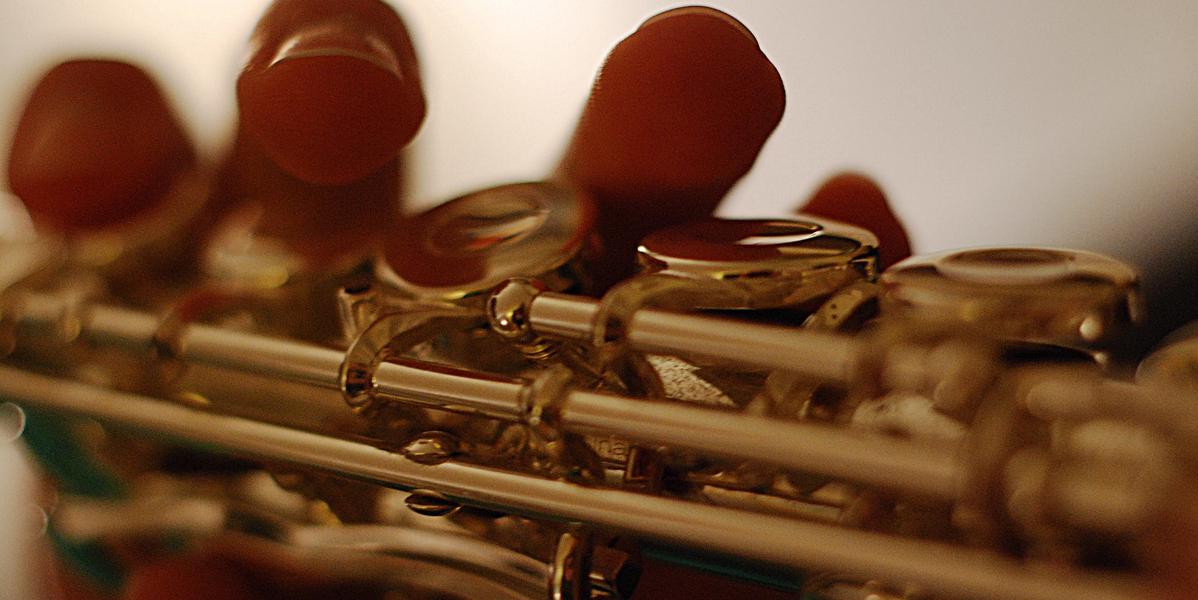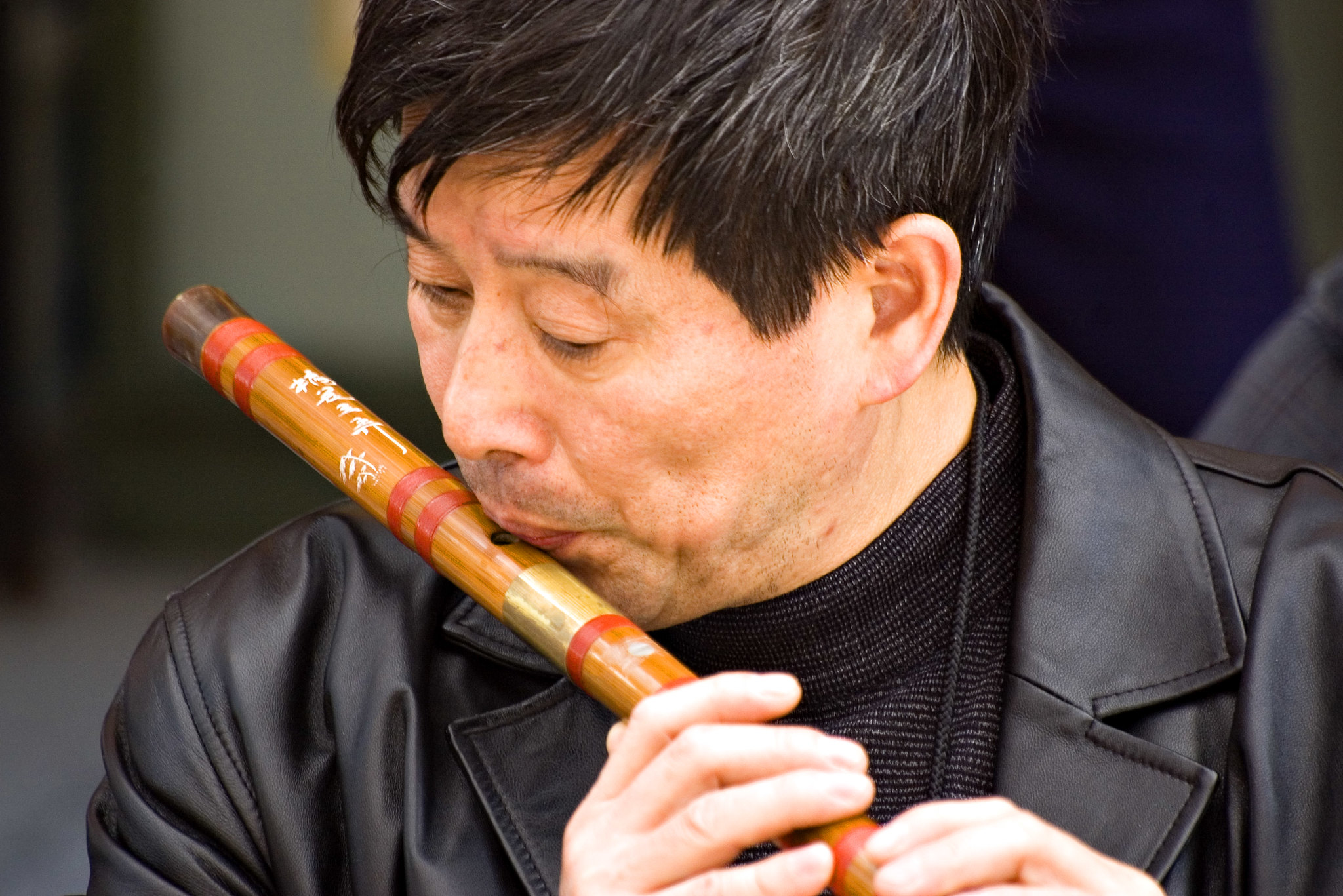The left-handed flute. Yes, it's a thing, but a very atypical thing. Below, we will explore the concept of the left-handed flute, who makes them, and things you should consider before going down the path of this variation on the instrument.
What Is It?
As with many products branded for “lefties,” the left-handed flute is a complete mirror of a standard flute design. This allows the flute to be played to the left of the player, with the right hand closest to the blowhole and the left hand supporting the weight and balance of the instrument.
Here is a video of two flutists playing the Andante et rondo by Franz Doppler. The flutist on the audience’s left is playing a standard flute while the flutist on the audience right is playing on a left-handed model.
There are arguments for and against such a design for the flute, which we will get to in a moment, but when you look at the early flutes, before there were keys and the application of acoustical science, many of the instruments could be played either to the left or the right. Even as keys started being added to the instrument, several examples can be found of flutes being made to extend to the player's left, indicating a sort of left-hand variety.
As the mechanism became more complex and standardized, the current “right-handed” configuration was the only one mass-produced. However, a left-handed flute is much easier to obtain now.
Who Makes Them?
The challenge with the left-handed flute is that there are not a lot of manufacturers of the instrument. The majority of left-handed flutes are custom requests through small flute builders and are not widely publicized. However, here are two flute builders who have and will produce left-handed flutes.
Parmenon is a company founded by the French flute maker Michel Parmenon in 1979. While they have a couple of innovations in flute design, any of their available models can be requested to be made as a left-handed flute. The majority of flutists who play on Parmenon flutes are French, as the company has not had a larger impact on the larger world of flute making.
Viento is a German flute builder. They make flutes in the beginner and intermediate ranges and are self-proclaimed to be the first (and perhaps only) flute manufacturer who produces left-handed models serially. They currently have four models built left-handed ranging in price from $780 to $3200.
Pros of Left-Handed Flutes
While people who are naturally left-handed have learned to play the flute the same way as a right-handed person, there could be some benefits to the idea of a left-handed flute. Viento’s website lists a couple of ideas that are interesting to consider.
First and foremost, a left-handed flute could provide a left-handed person with a more natural and comfortable playing position. When you think that the standard flute is supported primarily with the right arm, this could be a bit more difficult for a left-handed person whose right arm doesn’t have the same natural strength and stamina as their left.
A left-handed flute could also give a flute teacher an interesting tool to be a mirror image of the student. This could provide a better teaching visual for the student.
There is also an argument that could be made with left-handed flutes that, if played by a right-handed player, would allow for some balancing with their muscles and posture, which may be pulled in one direction constantly by playing a standard flute. If you follow this logic, a right-handed player should also own a left-handed flute to use periodically to stretch muscles in a different direction to maintain balance.
There is a bit of a brain exercise required by someone who is swapping back and forth. Since the hands are doing the exact opposite roles when switching between the left and the right, you are training your hands a bit differently and can think about playing a bit differently too. There are some that believe after playing a left-handed flute for a bit, their right-handed flute playing is much better.
Is It Really Necessary?
Lefties and Righties have been learning how to play the flute the same way for over a century. This leads us to discuss if these left-handed flutes are really necessary.
My personal answer… no, but maybe yes…
The flute is a two-handed instrument, and both hands required a lot of dexterity and fluidity to be a skilled flutist. One could argue that the left hand actually moves and plays more than the right. The primary difference between the two in terms of usage is which hand and arm is primarily supporting the flute.
Since the hands are flipped between the right and left-handed flutes, it makes it difficult for a flutist to just pick up a left-handed flute and play. While it would be unusual to find a left-handed flute just lying around that someone was expected to pick up and play, if the concept became more mainstream, it would cause this disparity between the different types of players that could be a challenge down the road.
However, I will say that maybe yes, this is a good option to have around for the right player. Someone with a particular handicap that makes this model ideal for their personal playing. There should be no difference in sound between a right and a left-handed model, so there is an element of “why not” in this answer as well.
Conclusion
I personally encourage anyone aspiring to play the flute to learn on a standard “right-handed” model, as most flutes are made this way, especially your top-line professional models from the most respected companies.
However, it is possible that anyone could find usefulness in a left-handed flute, from a practice exercise, a pedagogical tool, or just sheer comfort being a left-handed individual. Perhaps we will see more flute makers come out with left-handed models if there is enough interest from players.




